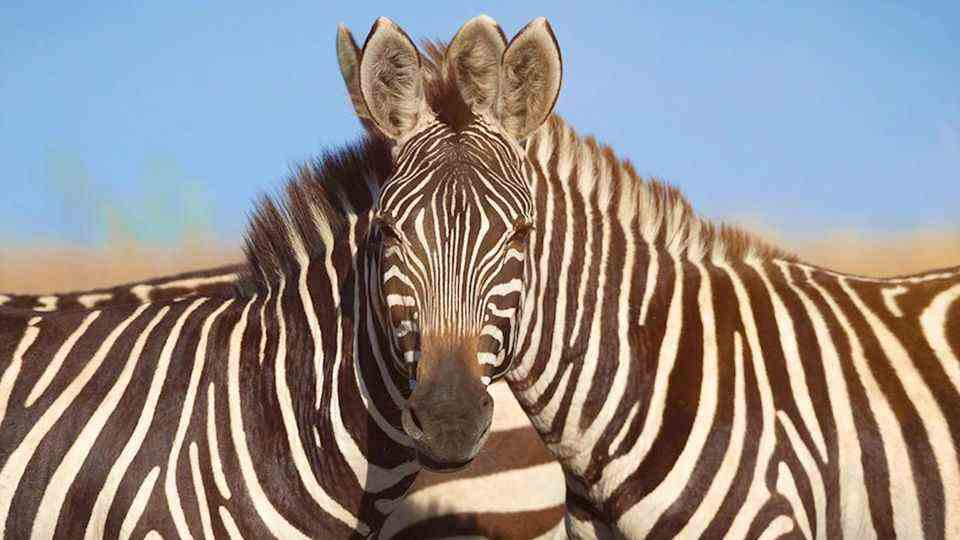South Africa
Breeding program wants to steal the stripes from the zebra – to revive an extinct species
Scientists from all over the world are following the zebra breeding project with fascination and irritation (symbol image)
© Catherine Withers-Clarke / Getty Images
Europe’s aurochs is extinct – but there are attempts to “breed it back”. Something similar is happening in South Africa with an animal known for its stripes: the zebra. After decades of breeding attempts, a project there is now about to achieve a breakthrough.
How do you remove the stripes from a zebra? What sounds as absurd as it is ambitious is the key question in an experiment in South Africa that, after decades of breeding attempts, is about to be completed successfully. “We now have a total population of 200 animals,” says March Turnbull of the Quagga project. Quagga – that’s the name of an extinct zebra subspecies. It looked a bit like a zebra that lost the painted stripes in the rain. At the end of the 17th century, they still roamed the steppes of South Africa in large herds.
For the European settlers, the animals, which looked like a mixture of horse and zebra, were only useless competitors for pasture and were exterminated. The last quagga died in an Amsterdam zoo in 1883. But after the breeding attempts, are there quaggas again? “We’re more optimistic than ever,” says Turnbull, “that we’ve made a major breakthrough toward the project goal.” The goal is achieved when there is a breeding herd of around 40 animals that look like quaggas. This is the case with about 20 animals today, even if the brown color still looks a bit weak.
Stripeless zebra
Quagga-like animals were bred from 1987 by deliberately crossing zebras with a suitable gene pool. The project, temporarily supported by South Africa’s National Parks Authority, intrigued many but also provoked heated debate and opposition. Scientists are following the project with both fascination and irritation. The nature park authority SANParks, for example, said goodbye to the project, also pointing out the risk of species mixing.
“It is certainly possible to ‘breed away’ the stripes from a zebra – but this does not result in a quagga, but only a stripeless zebra,” agrees Johannes Kirchgatter, Africa consultant for the World Wide Funds for Nature (WWF) Germany. Breeding based on visual aspects makes little sense from the point of view of species protection, since it has little to do with the extinct animal: “If you introduce a replacement species, it has to be scientifically justified and accompanied, and then it’s not primarily about appearance , but about ecological function and adaptation.” At most, such actions could raise awareness of the irreplaceability and irretrievability of species.
Turnbull also admits: “Evolution does not repeat itself.” That’s why he doesn’t call the animals, which have now been bred back in the sixth generation, not Quagga, but Rau-Quagga: after the German zoologist Reinhold Rau, who is considered the spiritual father of the project. He had found that the quagga DNA is very similar to that of the Burchell’s zebra. “This man was right,” says Turnbull.
South Africa’s quagga-like zebras are now divided into several herds, some of which also graze on game farms in the Western Cape Province around Cape Town. Because many farmers – and Turnbull also admits this – also see financial aspects in the enormous tourism potential of the globally unique, quagga-like zebras.

“The only thing we still have to work on is the brown color”
In this respect, only 105 Rau Quaggas are located directly in the project – the rest are with private breeders. “The animals are really starting to look like quaggas now – we just have to work on the brown color,” says Turnbull, who describes the goal of the project as follows: “We want to breed a zebra that looks as much like a quagga as possible .”
The question remains: Why didn’t quaggas have stripes back then – unlike their relatives in the rest of Africa? The assumptions revolve around the tsetse fly: For their eyes, zebras with stripes are virtually invisible. The loss of the stripes therefore indicates that this pest hardly ever existed in the quagga biotope – South Africa’s Western Cape Province – and the stripes were therefore superfluous.



